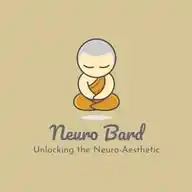
Neuro Bard
June 5, 2025 at 02:19 PM
*Defense Mechanisms*
Defense mechanisms are unconscious psychological strategies that individuals use to protect themselves from anxiety, unacceptable thoughts, or internal conflicts. These mechanisms were originally proposed by Sigmund Freud, and further developed by his daughter Anna Freud in her book The Ego and the Mechanisms of Defence (1936).
*What Are Defense Mechanisms?*
Defense mechanisms operate unconsciously and help the ego mediate between the id (instinctual desires), the superego (moral conscience), and reality. When there is conflict among these three systems, anxiety arises. To reduce this discomfort, the ego uses defense mechanisms.
*Types of Defense Mechanisms (with Examples)*
Defense mechanisms are often categorized from primitive (immature) to mature, based on how adaptive or healthy they are.
*Primitive (Immature) Defense Mechanisms*
These are often used in early childhood or in individuals with compromised ego strength.
1. Denial
Definition: Refusing to accept reality or facts.
Example: A smoker denies that smoking causes cancer.
Use: Protects from overwhelming emotion.
2. Projection
Definition: Attributing one’s own unacceptable feelings to others.
Example: A person who is angry at their boss may believe their boss is angry with them.
3. Splitting
Definition: Seeing people as all good or all bad.
Example: A client idealizes a therapist one week, then devalues them the next.
Common in: Borderline Personality Disorder.
4. Regression
Definition: Reverting to behaviors from an earlier developmental stage.
Example: An overwhelmed adult may start throwing tantrums.
*Neurotic (Intermediate) Defense Mechanisms*
Common in adults and considered moderately adaptive.
5. Repression
Definition: Unconsciously blocking distressing thoughts.
Example: A person who was abused as a child has no memory of the abuse.
Foundational concept: Basis for many other defenses.
6. Displacement
Definition: Redirecting emotions to a safer outlet.
Example: Yelling at a partner after being criticized at work.
7. Reaction Formation
Definition: Acting opposite to one’s true feelings.
Example: Treating someone you dislike with extreme kindness.
8. Rationalization
Definition: Creating logical reasons to justify unacceptable behavior.
Example: "I failed the exam because the teacher is unfair."
*Mature Defense Mechanisms*
These are adaptive and promote healthy functioning.
9. Sublimation
Definition: Channeling unacceptable impulses into acceptable activities.
Example: A person with aggressive tendencies becomes a professional boxer.
Most constructive: Freud considered this the most mature defense.
10. Suppression
Definition: Consciously pushing away unwanted thoughts.
Example: Choosing not to think about a conflict during an exam.
11. Humor
Definition: Expressing uncomfortable feelings in a way that brings pleasure to others.
Example: Joking about a surgery to ease anxiety.
12. Altruism
Definition: Dealing with stress by helping others.
Example: A person who has lost a loved one volunteers at a hospice.
*Defense Mechanism Classification (Vaillant’s Hierarchy)*
Psychiatrist George Vaillant (1977) categorized defenses into four levels:
Level I: Pathological (Delusional projection, denial)
Level II: Immature (Projection, passive aggression)
Level III: Neurotic (Repression, displacement, reaction formation)
Level IV: Mature (Sublimation, humor, altruism)
*Applications in Psychology*
Clinical Use: Defense mechanisms are studied in psychoanalysis and psychodynamic therapy. Therapists observe defenses to understand inner conflicts.
Assessment Tools: Defense Style Questionnaire (DSQ) and Life Style Index (LSI) are used to measure defense mechanisms.